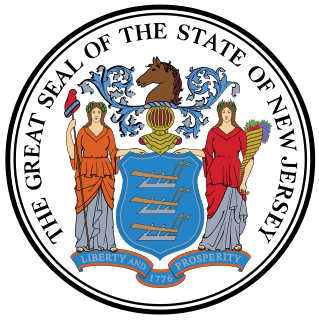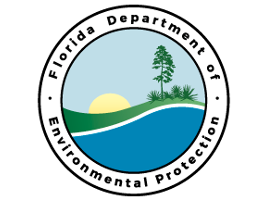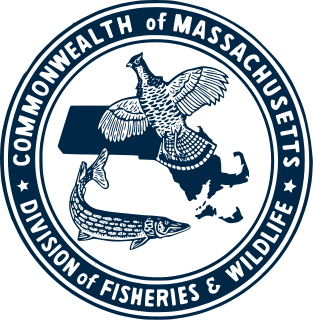Related Research Articles

The United States Fish and Wildlife Service is an agency of the US federal government within the US Department of the Interior dedicated to the management of fish, wildlife, and natural habitats. The mission of the agency is "working with others to conserve, protect, and enhance fish, wildlife, plants and their habitats for the continuing benefit of the American people."

The Kentucky Department of Fish and Wildlife Resources, an agency of the Kentucky Tourism, Arts and Heritage Cabinet, is responsible for the conservation of wildlife resources and for boating projects in the state. A commissioner appointed by the Fish and Wildlife Commission heads the department. The commission, which is responsible for department policy, is a nine-member bipartisan body appointed by the governor from a list of candidates voted upon by sportsmen's organizations in each of nine districts.

The New Jersey Department of Environmental Protection (NJDEP) is a government agency in the U.S. state of New Jersey that is responsible for managing the state's natural resources and addressing issues related to pollution. NJDEP now has a staff of approximately 2,850.

The Wisconsin Department of Natural Resources (WDNR) is an agency of the state of Wisconsin charged with conserving and managing Wisconsin's natural resources. The Wisconsin Natural Resources Board has the authority to set policy for the WDNR. The WDNR is led by the Secretary, who is appointed by the Governor of Wisconsin. The WDNR develops regulations and guidance in accordance with laws passed by the Wisconsin Legislature. It administers wildlife, fish, forests, endangered resources, air, water, waste, and other issues related to natural resources. The central office of the WDNR is located in downtown Madison, near the state capitol.

The Michigan Department of Natural Resources (DNR) is the agency of the state of Michigan charged with maintaining natural resources such as state parks, state forests, and recreation areas. It is governed by a director appointed by the Governor and accepted by the Natural Resources Commission. Currently the Director is Keith Creagh. The DNR has about 1,400 permanent employees, and over 1,600 seasonal employees.

The New York State Department of Environmental Conservation is a department of New York state government. The department guides and regulates the conservation, improvement, and protection of New York's natural resources; manages Forest Preserve lands in the Adirondack and Catskill parks, state forest lands, and wildlife management areas; regulates sport fishing, hunting and trapping; and enforces the state's environmental laws and regulations. Its regulations are compiled in Title 6 of the New York Codes, Rules and Regulations. It was founded in 1970, replacing the Conservation Department. and is headed by Basil Seggos.
The Hawaiʻi Department of Land and Natural Resources (DLNR) is a part of the Hawaiʻi state government dedicated to managing, administering, and excerising control over public lands, water resources and streams, ocean waters, coastal areas, minerals, and other natural resources of the State of Hawaiʻi. The mission of the Hawaiʻi Department of Land and Natural Resources is to "enhance, protect, conserve and manage Hawaiʻi's unique and limited natural, cultural and historic resources held in public trust for current and future generations of the people of Hawaiʻi nei, and its visitors, in partnership with others from the public and private sectors." The organization oversees over 1.3 million acres of land, beaches, and coastal waters and 750 miles of coastal land.

The Florida Fish and Wildlife Conservation Commission (FWC) is a Florida government agency founded in 1999 and headquartered in Tallahassee. It manages and regulates the state's fish and wildlife resources, and enforces related laws. Officers are managers, researchers, and support personnel, and perform law enforcement in the course of their duties.
The Iowa Department of Natural Resources is a department/agency of the U.S. state of Iowa formed in 1986, charged with maintaining state parks and forests, protecting the environment of Iowa, and managing energy, fish, wildlife, land resources, and water resources of Iowa.

The Florida Department of Environmental Protection (FDEP) is the Florida government agency charged with environmental protection. It is under the nominal control of the governor.
The Alabama Department of Conservation and Natural Resources (ADCNR) is the state agency responsible for the conservation and management of Alabama's natural resources including state parks, state lands, wildlife and aquatic resources. ADCNR also issues hunting and fishing licenses for the state. The department promotes wise stewardship and enjoyment of the state's natural resources through five divisions: Marine Police, Marine Resources, State Lands, State Parks and Wildlife and Freshwater Fisheries. Supporting those divisions are seven support sections: Accounting, Diversity and Recruiting, Engineering, Information and Education, Information Technology, Legal, and Personnel and Payroll.
The Maryland Department of Natural Resources (DNR) is a government agency in the state of Maryland charged with maintaining natural resources including state parks, public lands, state forests, state waterways, wildlife and recreation areas. Its headquarters are in Annapolis.
The Alaska Department of Fish and Game (ADF&G) is a department within the government of Alaska. ADF&G's mission is to protect, maintain, and improve the fish, game, and aquatic plant resources of the state, and manage their use and development in the best interest of the economy and the well-being of the people of the state, consistent with the sustained yield principle. ADF&G manages approximately 750 active fisheries, 26 game management units, and 32 special areas. From resource policy to public education, the department considers public involvement essential to its mission and goals. The department is committed to working with tribes in Alaska and with a diverse group of State and Federal agencies. The department works cooperatively with various universities and nongovernmental organizations in formal and informal partnership arrangements, and assists local research or baseline environmental monitoring through citizen science programs.

The Mississippi Department of Wildlife, Fisheries, and Parks (MDWFP), formerly known as the Mississippi Game & Fish Commission, is an agency of the government of the U.S. state of Mississippi responsible for programs protecting Mississippi fish and wildlife resources and their habitats, as well as administering all state parks; it has its headquarters in Jackson.

The Massachusetts Division of Fisheries and Wildlife, sometimes referred to as MassWildlife, is an agency of the Massachusetts Department of Fish and Game, within the Executive Office of Energy and Environmental Affairs. The Massachusetts Division of Fisheries and Wildlife (DFW) is responsible for the conservation - including restoration, protection and management - of fish and wildlife resources for the benefit and enjoyment of the public. MassWildlife was founded as a state fisheries commission in 1866 in response to citizen concerns about the loss of Atlantic salmon to dams and pollution. The agency's activities are mainly supported by revenue from the sale of hunting, trapping and fishing licenses, stamps and permits; returns from federal taxes on hunting and fishing equipment; various bond initiatives (primarily for land purchase. Additional funding is derived from voluntary donations from businesses, conservation organizations, and individuals.

The Montana Department of Fish, Wildlife and Parks (MFWP) is a government agency in the executive branch state of Montana in the United States with responsibility for protecting sustainable fish, wildlife, and state-owned park resources in Montana for the purpose of providing recreational activities. The agency engages in law enforcement activities to enforce laws and regulations regarding fish, wildlife, and state parks, and encourages safe recreational use of these resources.

The Massachusetts Environmental Police is a Massachusetts, US, state government law enforcement agency, which is the primary enforcement agency of Massachusetts's boating and recreation vehicle laws and regulations and is responsible for registering boats, off-highway vehicles and snowmobiles in Massachusetts. The agency is also responsible for the enforcement of fish and game laws, including commercial and recreational harvesting of the living marine resources along the state's coastline.
The North Dakota Game and Fish Department is the State of North Dakota's State agency charged with stewardship of the state's fish, game, and wildlife resources. The department sets fish and game regulations, including issuance of hunting and fishing licenses and enforcement of state regulations throughout the state. The department also enforces watercraft regulations and registration, along with enforcement of Invasive species laws.
References
- 1 2 New Jersey Division of Fish and Wildlife, About Us. Retrieved August 1, 2015.
- ↑ New Jersey Division of Fish and Wildlife, NJ Fishing and Hunting License and Permit Information. Retrieved August 1, 2015.